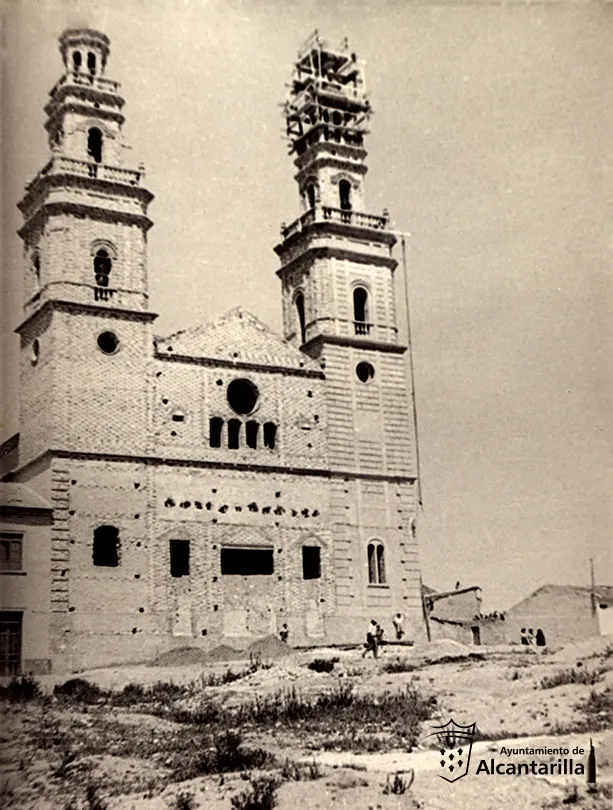
The parish church of Nuestra Señora de la Asunción was designed to bring together all the parishioners of the growing population of the Campoamor neighbourhood, in what was to be Alcantarilla’s second parish church. The first stone was laid in April 1951.
The project was carried out by the technical architect of the Area Base, Ramón Bágena Martínez, under the supervision of the first parish priest, Pedro Pérez García. It counted on the active participation of many neighbours of Alcantarilla and public and private institutions that, encouraged at all times by the enthusiasm and illusion of the parish priest, made it possible for the town to have a monumental church surrounded by a privileged surrounding.
In 1954, the church was under construction, with the roof of the central nave and the columns separating the two side naves, following the model of a basilica plan. On the outside, also under construction, the two towers of the church, which due to their height and design would become a sign of identity of the Campoamor neighbourhood.
The following year, work was completed on the Plaza de la Inmaculada, with a stone image by Luis Luna, and its inauguration coincided with the day on which the patron saint of Alcantarilla, Nuestra Señora de la Salud, was named honorary mayoress of Alcantarilla, on 29th May 1955.
The church was consecrated and opened for worship three years later, in May 1958, when D. Ramón Sanahuja y Marc was bishop. Ramón Sanahuja y Marcé was bishop. Its interior, of impressive monumentality, houses work of art, such as the frescoes of the Assumption of Mary in the vault of the presbytery and the coffered ceiling of the main nave, made by Valencian artists under the direction of Rafael Cardells, and the mosaics of the Way of the Cross that decorate the side naves, the work of the Murcian artist Hernández Carpe, completed in 1964.

